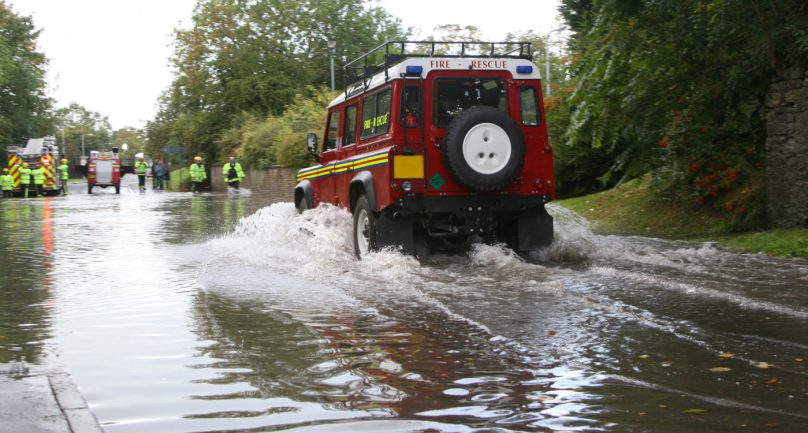Remote Sensing Decision Support System for Optimal Access Restoration in Post Disaster Environments
START YEAR:
COMPLETION YEAR: 2017
TOPIC(S): Disaster Response
PRIMARY CONTACT(S):
- José Holguín-Veras
PARTNER(S):
- New York City Department of Transportation (NYCDOT)
- Rochester Institute of Technology (RIT)
SPONSORS/FUNDING:
- U.S. Department of Transportation

OVERVIEW
The project’s main goal is to develop a state-of-the-art Decision Support System (DSS) that, using network condition and disaster impact assessments provided by Commercial Remote Sensing (CRS), will compute optimal Access Restoration Plans (ARP). This will help responders optimally use their scarce resources to orchestrate the road openings, road repairs, and other similar actions; and subdivide the work so that multiple groups could seamlessly cooperate to reach maximum effectiveness. The DSS will process multi-modal temporal data feeds (GIS, social media feeds, etc.) to update estimates of disaster impacts, and will use modern optimization procedures to update the ARP as new data becomes available. To achieve the overall goal, the team will collaborate to:
- Develop a Commercial Remote Sensing (CRS) Module that allows emergency response personnel and planners to produce rapid and accurate assessments of network conditions and disaster impacts by integrating multi-modal/multi-temporal data
- Develop an Optimization Module and the Decision Support System (DSS) to produce an Optimal Access Restoration Plan using appropriate priority metrics
- Create a DSS that is smoothly transitioned to practice, fully validated, and useful to responders. These tasks will ensure that the DSS meets the expectations of the end users, in terms of ease of use, quality of results, and usefulness. This will be accomplished by means of creating a Technical Advisory Council, a vigorous process of outreach and validation, and a solid process of training and transition to implementation
- Develop appropriate procedures for integration of multiple responder groups. This objective seeks to facilitate the integration of multiple responder groups (such as nearby DOTs that send equipment like plow trucks and loaders to help the effort) to the overall effort of access restoration
KEY TASKS
- Assessment of the CRS technologies for use on debris and flood classification
- Development of algorithms for location, classification, and quantification of debris/flood occurrences
- Development of procedures to integrate multi-modal/temporal data to assess disaster impacts
- Development of algorithms and scripts to geo-locate estimates of network conditions and disaster impacts
- Review, evaluate, and select applicable priority metrics
- Develop and improve the Optimization Module
- System Integration of the CRS and Optimization Modules to create the Decision Support System (DSS)
- Creation of Technical Advisory Council (TAC)
- Review current practices
KEY FINDINGS
- Developed CRS technologies to implement algorithms to detect obstructions to the roadway
- Considered 5 different metrics (population, private cost, time, deprivation time and cost, and social costs)
- Recognize that each metric could lead to different results
- Suggest procedures to let the users of the DSS select the most appropriate metric
KEY PRODUCTS
- Final Report
- Access Restoration Planning (ARP) Software
ADDITIONAL PRODUCTS
CONTRIBUTING TEAM MEMBERS
- Felipe Aros-Vera
RELATED PROJECTS
